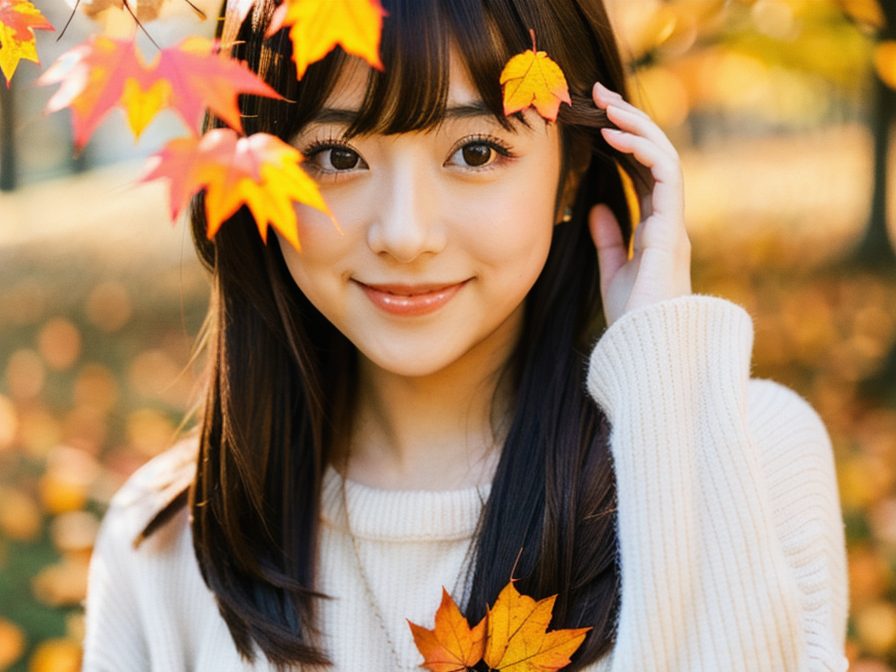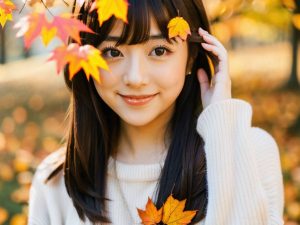As the mornings and evenings grow cooler, you suddenly notice that the trees are beginning to change color.
Mountains and roadside trees are dyed in gradations of red, yellow, and orange. Japan’s autumn is truly “one of the most beautiful seasons in the world.” Even without visiting tourist spots, the maples lining the street on your way to work or the trees in a park can soothe your heart in a quiet moment.
But why are Japan’s autumn leaves so captivating? When we look into the science, history, and regional variations behind their beauty, we find surprising depth.
This article explores interesting facts about Japan’s autumn foliage and explains the characteristics of each region’s peak season. Let’s turn this autumn from something you simply see into something you can truly feel and appreciate.
The Charm of Autumn Leaves: Why They Captivate the Japanese
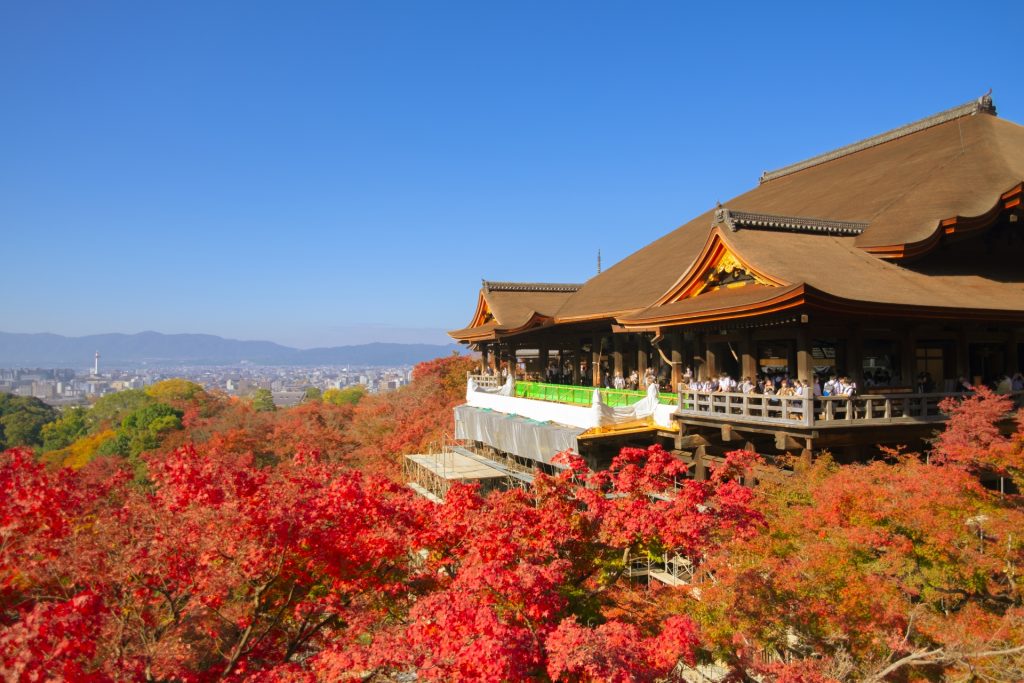
In Japan, viewing the autumn leaves is called “momijigari,” or “autumn leaf hunting.” The term originated in the Heian period, when nobles would go out to appreciate the beauty of nature.
Just like cherry blossom viewing in spring, leaf viewing in autumn represents the Japanese sense of the seasons.
One reason Japan’s autumn scenery is so stunning is the diversity of its trees.
Not only maples but also ginkgo and rowan trees turn color, creating a brilliant mix of reds, yellows, and oranges.
This layered gradation of color is rare elsewhere, drawing photographers from around the world to Japan.
The vibrancy of the leaves also depends on temperature differences. The greater the contrast between day and night, the more vivid the colors become.
For example, in places like Arashiyama in Kyoto and Kamikochi in Nagano, the varied elevations allow the foliage season to last longer, offering extended enjoyment.
The Science Behind the Changing Colors of Autumn Leaves
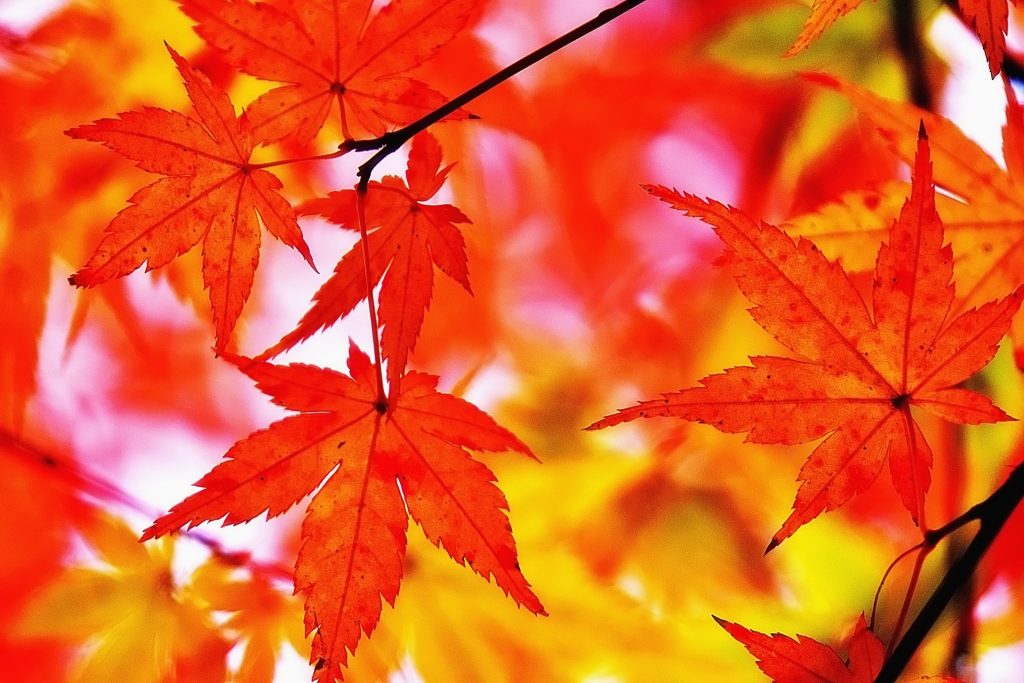
The changing colors of autumn leaves are not just a natural phenomenon—they’re part of a plant’s “survival strategy” to prepare for winter.
As chlorophyll, the pigment that makes leaves green, breaks down, pigments like anthocyanin and carotenoid emerge, producing reds and yellows.
Interestingly, the mechanism differs between maples that turn red and ginkgo trees that turn yellow.
Maples produce new anthocyanins to turn red, while ginkgo leaves simply lose their chlorophyll, revealing the yellow carotenoids already within.
In other words, “red” is the result of effort, while “yellow” was there all along.
Knowing this chemistry gives a deeper appreciation of the natural artistry of autumn.
The Connection Between Autumn Leaves and Japanese Culture
Autumn foliage is not just a seasonal spectacle; it is a symbol deeply rooted in Japanese aesthetics and daily life.
From poems in the Manyoshu anthology to Heian-era leaf-viewing gatherings, from kimono patterns to pottery glazes and dishware, the colors of autumn are woven throughout Japanese culture.
Even today, autumn leaves continue to express the Japanese sensitivity to the changing seasons.
Let’s take a closer look at how they are reflected in traditional arts and design.
Tea Ceremony and Autumn Leaves: Savoring the Season in Stillness
In the tea ceremony, autumn leaves represent the spirit of the season—not only visually, but emotionally.
Placing a branch of maple in the alcove of a tea room mirrors the quiet passage of nature.
In Kyoto’s Urasenke school, autumn tea gatherings often feature maple-themed tea bowls and hanging scrolls, allowing guests to feel the atmosphere of the season before even tasting the tea.
The fleeting beauty of the leaves parallels the “ichigo ichie” spirit of treasuring each moment.
Through a single bowl of matcha, the visible scenery and inner stillness become one—that is the uniquely Japanese beauty born from tea and autumn leaves.
Kaiseki Cuisine and Autumn Leaves: Experiencing Autumn with All Five Senses
In kaiseki cuisine, autumn leaves are an essential element of seasonal presentation that enhances flavor and mood.
A single maple leaf on a dish, or the use of red and gold tones in plating, embodies the passage of time known as autumn.
The foundation of kaiseki is to “reflect the season,” and the maple leaf symbolizes bringing the beauty of nature to the dining table.
It also provides visual contrast that highlights the food itself, allowing diners to experience the season through sight, taste, and smell.
Beyond eating, it represents harmony between people and nature—the essence of Japanese aesthetics.
The Aesthetics of Autumn Leaves in Japanese Gardens
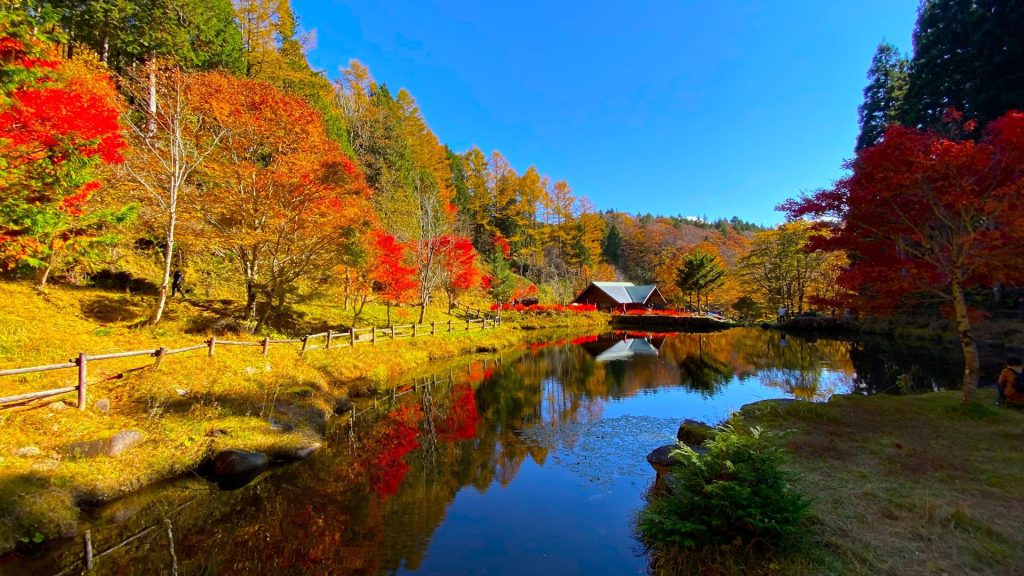
Autumn foliage has also profoundly influenced Japanese garden design.
In gardens built on the spirit of wabi-sabi, colored leaves symbolize the flow of time.
Green moss, black stones, and reflections of red and yellow leaves on still water—all combine to form a balance that defines Japanese beauty.
Rikugien (Tokyo)
Created in the Edo period by Yanagisawa Yoshiyasu, Rikugien is known as “the garden of poetry.”
In autumn, the entire garden glows in shades of red, orange, and gold. Nighttime illuminations turn the pond’s reflections into a dreamlike world.
Walking the circular path, you see different hues from every angle, feeling time slow with each step.
Visitors can enjoy matcha and sweets at Fukiage Teahouse, surrounded by maples—a moment that feels like stepping back into the Edo era.
Kenrokuen (Kanazawa)
One of Japan’s Three Great Gardens, Kenrokuen attracts many visitors during autumn.
Around mid-November, when snow ropes are set up, the maples and kaede trees surrounding the ponds glow with color, creating different moods by day and night.
The illuminated reflections look like shimmering gold leaf, breathtakingly beautiful.
Together with the first snow, Kanazawa’s scenery captures the delicate transition between autumn and winter.
Tips for Photographing Autumn Leaves: Capturing the Perfect Moment
The beauty of autumn leaves lasts only a short while. Their appearance changes dramatically depending on light and time of day.
Even with a smartphone, you can take photos as stunning as a professional’s. Here are some simple tips to bring out the best colors in your shots.
Make Use of Light: Morning and Evening Are Best
Avoid harsh midday sunlight—soft light in the morning or evening is ideal.
Morning dew makes the leaves sparkle, while evening light deepens reds and oranges.
Backlighting enhances translucency, making the leaves appear to glow.
Try shooting the same scene at different times—morning, afternoon, and dusk—to capture its changing mood.
Balance Space and Color
Instead of close-ups alone, include the sky or water reflections to add depth.
Keep these points in mind for balanced composition:
| Photography Tip | Why It Makes the Photo Beautiful |
|---|---|
| Place the main subject slightly off-center instead of in the middle | Creates a natural composition with a sense of depth |
| Include reflections of water or buildings in the background | Adds a dreamy and artistic atmosphere |
| Shoot from a low angle looking up | Highlights overlapping leaves and gives a three-dimensional effect |
Changing the camera’s height or angle can dramatically alter the result—try crouching or looking up for variety.
Adjust Exposure and White Balance
Autumn leaves are sensitive to light; the wrong settings can dull their colors.
Lower the exposure slightly (−0.3 to −0.7) for richer reds and yellows.
Set the white balance to “cloudy” or “shade” for a warmer tone.
For social media, lightly boost saturation and contrast to keep a natural but vivid look.
The secret to great photos is not perfection—it’s presence.
Feel the light, wind, and air of the moment, and your photo will carry the warmth of autumn itself.
From “Seeing” to “Feeling” Autumn Leaves
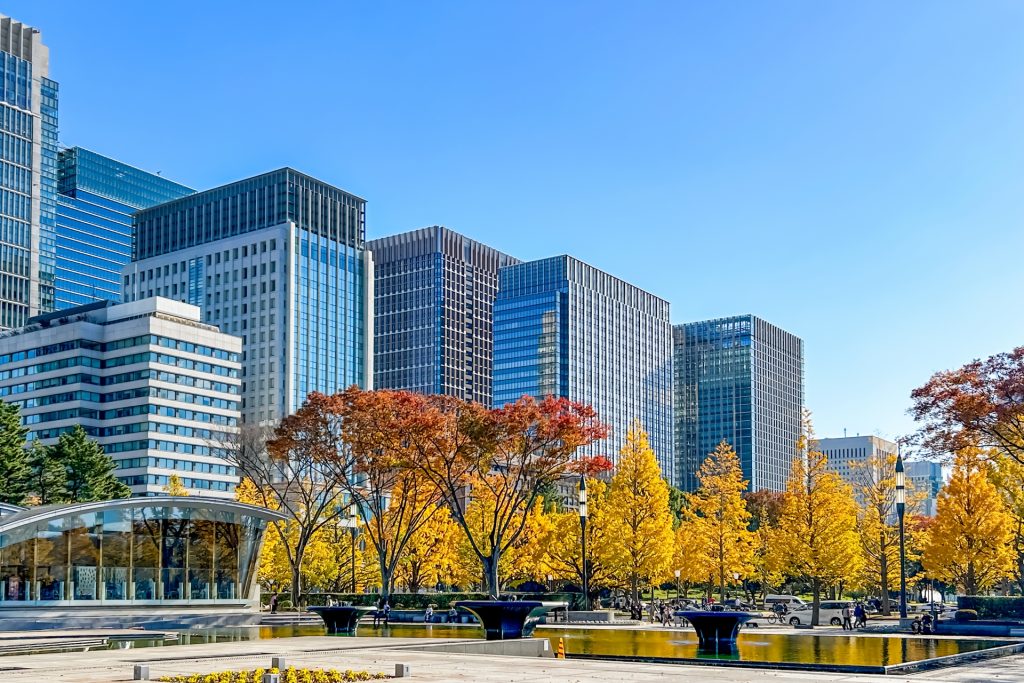
Autumn leaves represent a harmony of science, culture, food, and experience—Japan’s own living art form.
They embody both nature’s cycles and human sensitivity.
Beyond simply thinking “beautiful,” notice the scent, air, taste, and sound around you, and the season will feel even more special.
This autumn, take a pause and experience each moment with all five senses.


